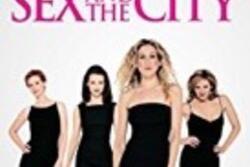It’s Time to Ditch the Bechdel Test–Or at Least Take It Less Seriously
“As a gay Asian man, I’ve always struggled to pass the Bechdel test. That’s why, for this Pride Month, I’ve partnered with every white woman who’s started an Asian culture-appropriating business.” –@damnparka
“I loved FIRE ISLAND, even though it wasn’t “for” me or “about” me and apparently it doesn’t pass the Bechdel test. Crazy, I know.”–@craftingmystyle
“[E]xhausted. I was up all night studying for the Bechdel test” –@Grindr
It seems the Bechdel test has finally reached its day of reckoning.
A few weeks ago, writer Hanna Rosin posted the following tweet about the new movie Fire Island: “So @hulu #FireIslandMovie gets an F- on the Bechdel test in a whole new way. Do we just ignore the drab lesbian stereotypes bc cute gay Asian boys? Is this revenge for all those years of the gay boy best friend?”
Rosin’s tweet criticizes Fire Island, a new romantic comedy based on Jane Austen’s Pride and Prejudice that follows a group of friends on a week-long trip to Fire Island’s gay villages, for what she sees as insufficient female representation. In commenting on the movie, Rosin uses the Bechdel test as many critics do: as shorthand to say that the film is anti-feminist.
The Bechdel test, named for cartoonist Alison Bechdel, who devised it in 1985, has been a ubiquitous part of how we talk about representation in media for a while now. To pass, a movie must meet the following criteria: it must have two or more female characters who interact with each other and discuss something other than a man. Fire Island fails the test because it only has one female character, played by Margaret Cho: a lesbian who owns a house on the island where she hosts the movie’s central group of characters.
The backlash to Rosin’s tweet was immediate. Many took issue with her use of a measure of female representation in a movie about the experiences of gay men. Cho herself, who is bisexual, tweeted, “I didn’t realize I was drab. I don’t identify as drab. Bitch I’m fab!”
The next day, Rosin deleted her tweet and apologized. Hours later, Alison Bechdel herself weighed in: “Okay, I just added a corollary to the Bechdel test: Two men talking to each other about the female protagonist of an Alice Munro story in a screenplay structured on a Jane Austen novel = pass.” (Bechdel is referring to a discussion two characters have in the film about a short story by Munro). In response, the official Fire Island account wrote simply: “WE PASSED!!!!!!”
The issue might seem simple—it doesn’t make much sense to apply the Bechdel test to a film depicting gay male relationships. But the firestorm over Rosin’s tweet suggests that we need to think more generally about how we view and use this term in relation to the media we consume. How did we get to the point where just the phrase “F- on the Bechdel Test” immediately implies that a movie is “bad for women”? Should we really place so much importance on the test?
We might get a better idea of how we can effectively use this term by understanding its origins, and how it has changed since then. The criteria we now know as the Bechdel test initially appeared in Alison Bechdel’s comic strip series Dykes to Watch Out For, which ran from 1983 to 2008, making it one of the longest-running queer comic strips of all time. The series follows a large group of characters, primarily lesbians, throughout their daily lives, with them aging in real time. It includes soap opera-style storylines, but its characters also regularly comment on contemporary events, political issues, and lesbian culture, offering readers a glimpse into the lives and discussions of Bechdel’s own community.
The strip in which the Bechdel test originated, entitled “The Rule,” occurs early in the series and features two of its characters walking past a movie theater. One asks whether the other would like to see a movie, and her companion responds that she has a rule in which she only sees movies that satisfy “three basic requirements”—the requirements that later would become the Bechdel test. The first woman responds that the rule is “pretty strict, but a good idea.”
The idea didn’t gain much traction at first, but in the early 2000s, it began to circulate on the internet and became a widespread phenomenon. Today, it’s almost a household phrase. Software developers have created programs that allow screenwriters to see if their films pass the test, and projects such as the Bechdel Project and Bechdel Theatre Campaign are devoted to developing new stage and screen works that pass.
The Bechdel test has also been adapted to measure and comment on other forms of representation in media, with tests such as the DuVernay Test for Black characters, the Aila Test for Indigenous women, and the Johanson analysis, which provides a more elaborate set of criteria for female characters. In 2020, JWA published an article proposing a Jewish Bechdel test, whereby narratives must explicitly indicate that a character is Jewish, depict the character in scenes where they are not suffering because of their Jewishness, and exhibit traits beyond overt Jewish stereotypes.
Bechdel has explained that she never foresaw “the rule” becoming so popular, influential, and seriously debated. After all, it began as, in her words, “just a little lesbian joke in an alternative feminist newspaper,” meant not to determine the quality of a movie’s female representation but instead to reflect the discussions she saw within her community on lesbians in entertainment in a tongue-and-cheek manner. As she realized its potential, though, Bechdel began to associate herself more with the test.
In recent years, critics have begun to highlight the test’s limitations as a measure of how feminist a movie is. Some have pointed out movies like Twilight that are not feminist and pass—Twilight has multiple female characters who discuss topics other than men, but it still perpetuates traditional gender roles and depicts unhealthy relationships. Others, like Gravity, don’t pass due to having a small cast (i.e., only one female character) but are entirely centered around female protagonists. A piece in the Guardian points out that women’s conversations about men can be feminist, even when they are about romantic relationships.
These critiques point to a deeper issue, one that is also increasingly discussed lately: that the test shouldn’t be used as the only measure of how feminist a movie is. This might even be regressive—the test could be a way for filmmakers to tick off boxes, as opposed to making a serious commitment to creating significant female characters and storylines with depth.
The Bechdel test’s limitations don’t mean that it is inherently flawed, though; the flaws are in its use as a serious and be-all-end-all metric of criticism—something it was never meant to be. Bechdel herself does not shy away from the fact that the test is, in her words, “not scientific or anything,” often pointing out that feminist movies do not always pass.
What Bechdel seems especially to want to emphasize is the test’s non-serious nature, as evidenced by her frequent reminders that it began as a satirical joke and her response to Rosin’s Fire Island tweet, in which she playfully added an “exemption” to the test. Bechdel’s commentary indicates that she does not place as much importance on the “rule” as others do— and maybe she would like us to have more fun with it too.
Even the characters in the original comic strip recognize that the test cannot function as an actual measure of representation, and instead just serves to show how low the bar is for female representation in film. In its last few panels, the character who proposes the rule reveals that the last movie she saw that passed was Alien, released six years prior, in which the two female characters very briefly discuss their survival strategy against a monster. The takeaway is clear: When considering the quality of representation in media, we should favor actual analysis and critical thinking over meeting requirements.
We should also acknowledge that whether something is “good representation” is always going to be subjective; some people might think a certain movie is a feminist masterpiece, while others will completely disagree. Because of this, many of the spinoffs of the Bechdel test are similarly subjective, unlike the original, which has a measurable set of criteria. For example, the Jewish Bechdel test proposed in the aforementioned JWA piece asks for characters to exhibit traits beyond Jewish stereotypes, something that can’t be determined objectively. This might explain the wildly different reactions to some popular shows and films with Jewish characters, like The Marvelous Mrs. Maisel, which some Jews love but others think perpetuates negative stereotypes.
So…what’s the solution? A better Bechdel test? I don’t think so—I don’t think the “test” format will ever capture the nuances of the ongoing discussion of representation in entertainment. Instead, I propose this solution: No more tests. Or at least no more taking tests this seriously. We should not need a list of boxes to check off to tell us whether a movie is feminist, and there is no set of perfect requirements that will always, without fail, ensure effective representation. Although tests are useful because they raise issues for filmmakers and audience members to consider and result in important discussions, we all have critical thinking skills, and it’s time to put them to use—they are our best tools in advocating for entertainment that truly speaks to the values we care about.








I think the flaw in our cultural understanding of the Bechdel test is that it has anything to do with the general feminism of a movie at all, when it's actually a test to see if you can project lesbianism onto some characters in an era where there is as a rule not going to be actual lesbian representation. Can I go home and wrote some super extrapolative femslash fanfic without having to create a character from scratch? Can I forgot for two seconds that this girl is 100% heterosexual? Does this movie throw my lesbian heart a single crumb?